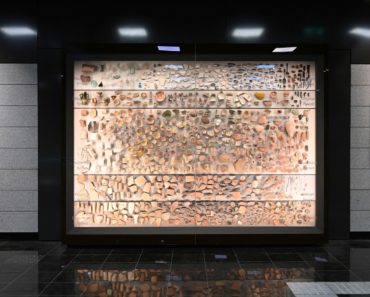
A major discovery has been made in the waters near Santa Maria del Focallo, a coastal area in Ispica, Sicily, Italy. A group of researchers exploring underwater sites found an ancient shipwreck believed to be over 2,500 years old, likely sinking between the 6th and 5th centuries BC, proving the exchange of goods during a time when Greeks and Carthaginians fought for control of the seas.
Ancient shipwreck found six meters below the water
The shipwreck lies just six meters underwater, hidden beneath layers of sand and rocks. Experts say the ship’s hull was built using a special method called the “su guscio” technique. This technique involved fitting wooden planks together with special joints and clamps. It made the ship strong and able to hold its shape.
Nearby, researchers discovered various types of anchors. Two Byzantine iron anchors, shaped like an upside-down “T,” likely date to the 7th century AD, while four stone anchors, which appear much older, may date back to prehistoric times. These findings highlight the area’s long history of sea travel across different eras.

Using advanced tools like underwater photography, researchers created a detailed 3D model of the shipwreck. This helped them carefully record every part of the discovery.
Experts also collected samples from the site. These samples will be studied to learn more about the plants and materials used to build the ship. This analysis will also give clues about the environment where the ship once sailed.
Trade of ancient Greeks and Carthaginians
The recent underwater exploration is part of the fifth phase of the Kaukana Project, which began in 2017. This project focuses on studying the coastal and underwater areas between Ispica, Kaukana, and Kamarina.
Led by the University of Udine, in collaboration with international research centers, the project aims to protect and showcase underwater cultural heritage. The discovery of the shipwreck during this phase highlights the significance of these waters.
This shipwreck is more than just a find — it holds valuable information about a key time in history. It dates back to a period when ancient Greece was transitioning from its early to classical phase.
During this time, Sicily’s colonies played an important role in trade and conflict. The wreck provides proof of the goods exchanged during a period when Greeks and Carthaginians fought for control of the seas, long before Rome became a dominant force in the Mediterranean.






